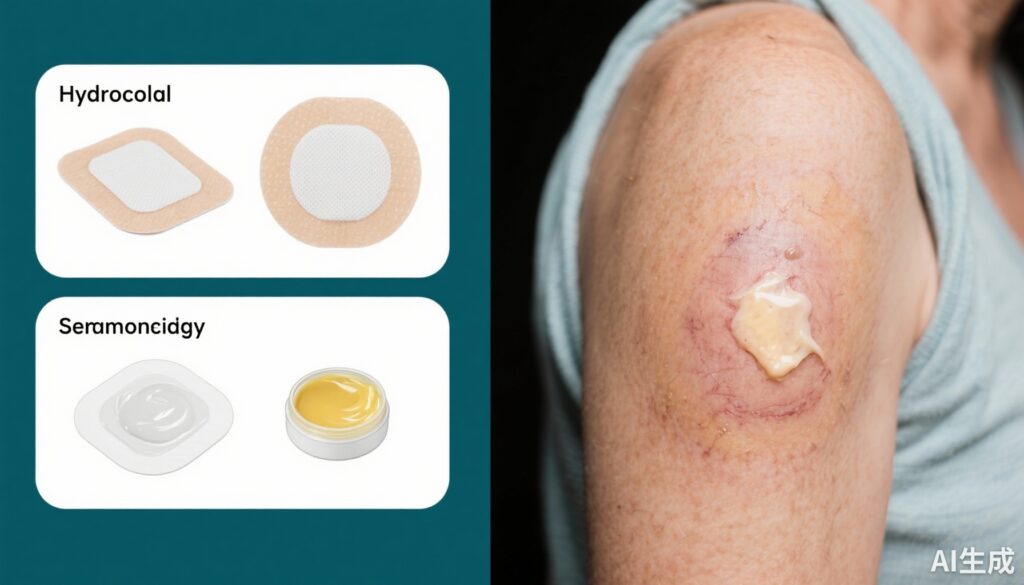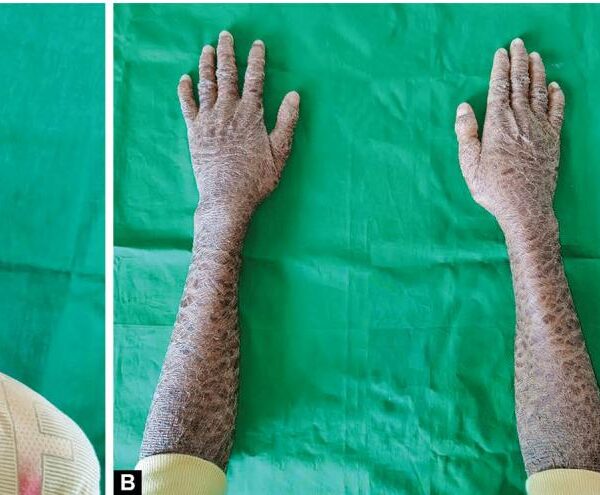Introduction
Scar management following dermatologic surgery remains a significant concern for clinicians and patients alike. Optimal wound healing not only minimizes physical disfigurement but also impacts psychological well-being. Traditionally, topical petroleum ointments have been widely used for scar care, primarily due to their accessibility, cost-effectiveness, and ease of application. However, hydrocolloid dressings (HCDs), designed to promote wound healing by maintaining a moist environment and providing a protective barrier, have gained popularity as an alternative. Despite their theoretical benefits, high-quality evidence comparing these two interventions is sparse.
This review critically examines the recent randomized clinical trial conducted by Bell et al., which compares a single application of HCD for one week versus daily petroleum ointment application in the postoperative period following dermatologic excisions. The study’s findings, implications for clinical practice, and future research directions are discussed.
Study Background and Rationale
Scar formation is a complex biological process involving inflammatory, proliferative, and remodeling phases. An optimal environment facilitating these phases can lead to improved cosmetic outcomes. Hydrocolloid dressings have been suggested to enhance healing by maintaining moist conditions, preventing bacterial invasion, and reducing pain. Conversely, petroleum ointments create a barrier that retains moisture but may be less active in modulating the wound environment.
Given the increasing adoption of advanced wound dressings, it is vital to base clinical decisions on robust evidence. Prior to this trial, most data were observational or based on small cohort studies. The lack of randomized controlled trial data on the comparative effectiveness of HCD versus petroleum ointment after dermatologic surgery represents a significant knowledge gap.
Study Design and Methods
This investigator-blinded, randomized clinical trial enrolled 146 adult patients scheduled for standard excision or Mohs micrographic surgery with linear bilayered repair at a large academic institution in Indiana. Participants were randomized to receive either a single application of hydrocolloid dressing over the surgical site for one week or daily reapplication of petroleum ointment. Key exclusion criteria included prior use of HCD, use of topical chemotherapy agents, allergies to adhesives, and communication barriers.
Primary Outcome:
– Patient-reported scar appearance assessed via a modified Visual Analog Scale (VAS) at 7, 30, and 90 days.
Secondary Outcomes:
– Blinded surgeon ratings, rates of surgical complications (bleeding, wound dehiscence, pain), patient-rated comfort, and convenience.
Data was collected with a rigorous follow-up schedule, and statistical analyses were performed accordingly.
Key Results
The trial’s demographic profile was balanced between the two groups, with a mean age of approximately 62 years. The main findings are summarized as follows:
– At 7 days, the HCD group demonstrated a marginally better (but not statistically significant) patient-reported scar appearance with a mean VAS difference of -0.40 points (95% CI, -0.70 to -0.10).
– At 30 and 90 days, differences were negligible and within the confidence intervals that suggest no meaningful clinical difference.
– Surgeon assessments of scar appearance were comparable between groups.
– The HCD group exhibited higher rates of adverse events, such as postoperative bleeding (20.6% vs 8.8%), wound dehiscence (6.2% vs 0%), and postoperative pain (21.2% vs 12.3%); however, none of these differences reached statistical significance.
– Patient-reported comfort and convenience favored the HCD, with approximately 87% rating it as convenient versus 47% rating petroleum ointment similarly.
These results suggest that a single application of HCD for one week provides scar outcomes similar to daily petroleum ointment, with higher patient satisfaction regarding comfort and convenience.
Discussion and Critical Appraisal
The trial provides high-quality evidence that a one-time application of hydrocolloid dressing post-surgery is a viable alternative to daily petroleum ointment, with comparable cosmetic outcomes and safety profiles. The improved patient-rated convenience underscores the potential for HCD to enhance adherence and patient satisfaction.
Nonetheless, the observed trend toward higher adverse event rates in the HCD group warrants further investigation. Although these differences were not statistically significant, clinicians should consider individual patient risk factors, such as bleeding diatheses or wound tension, before opting for HCD.
Limitations include the single-center design and primarily adult patients with linear excisions, which may limit generalizability to other populations and wound types. Future multi-center trials with larger samples are recommended to confirm these findings and explore long-term scar quality.
Implications for Clinical Practice
This study suggests that hydrocolloid dressings, applied once for one week, can be incorporated into postoperative care protocols, especially for patients prioritizing comfort and convenience. Cost considerations and patient-specific factors should guide the choice between HCD and petroleum ointment.
Conclusion
The randomized clinical trial by Bell et al. highlights that hydrocolloid dressings provide a comparable, safe, and patient-preferred option for postoperative scar management following dermatologic surgery. This evidence supports a tailored approach that considers patient preferences, cost, and individual risk profiles.
Funding and Trial Registration
This study was registered under ClinicalTrials.gov Identifier: NCT05618912. Funding sources were not specified but are presumed institutional based on context.
References
Bell MC, Gangodawila TW, Morr CS, Xue GR, Iqbal A, Merkel EA, Abdulhak AH, Slaven JE, Que SKT. Hydrocolloid Dressing vs Petroleum Ointment for Scar Appearance After Dermatologic Surgery: A Randomized Clinical Trial. JAMA Dermatol. 2025 Oct 22:e254051. doi: 10.1001/jamadermatol.2025.4051.



